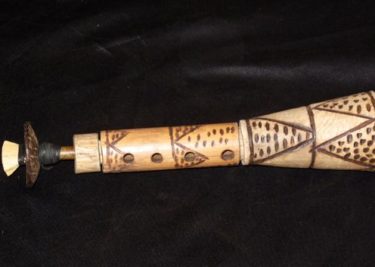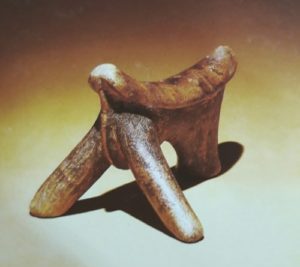Kenyan Traditional Attire
Since time immemorial, people have adopted different types of clothing for various purposes. Women used lesos to protect their bodies from both heat and cold while men, especially among the pastoralist communities, used shukas. Elders wore specific jewellery or had a distinct dress code. In this first part of two, we revisit some of the traditional wear of the Luo, Turkana, Borana and Swahili people, as well as that of many pastoralist communities throughout Kenya:
Traditional Head Covers
Ogut Tigo
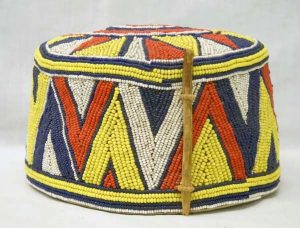
Made up of hundreds of tiny beads, each 1mm in diameter, sewn into a pad made of raffia and cotton cloth in a triangular pattern. The interior support is made of thin sticks, bent and tied together to create a frame for the pad. It was worn by male elders among the Luo.
Ligisa
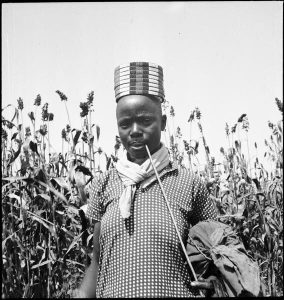
These were beautiful, beaded head covers for women among the Luo. Unlike the ogut tigo, they had an open top and the additional decoration of cowrie shells. The common colours of beads used were white, red and blue.
Arash
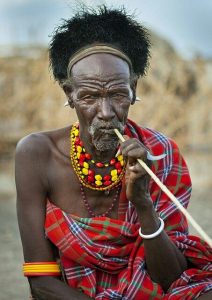
This eye-catching headgear was made from ostrich feathers, and crafted specifically for Turkana elders. A small leather ring was used as the base. Tiny holes were punched into it and the feathers were carefully arranged according to colour and size.
Traditional Body Covers
Guntina, Garbisa and Hagobo
These were three pieces of cloth donned by Borana women, who stood out from women in other communities as a result of their dressing. The hagobo was the headscarf, worn tightly around the head by married Muslim women; the garbisa – the upper body cover and the guntina as the lower body cover. The materials look similar to those used for lesos.
Sambu (or Sambut)
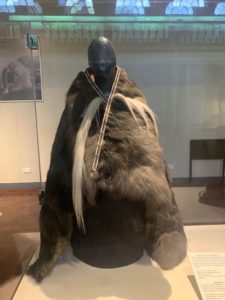
Cloaks were a common piece of clothing in past times. Among the Kalenjin sub-tribes, cloaks were reserved for important people in the community such as elders. This attire was commonly known as Sambu, or Sambut, and was made from a fusion of Sykes’ monkey’s skin and decorated with white and black tufts from the Colobus monkey.
While this may have been a common and popular cloak back then, we must acknowledge that to make this cloak in Kenya today is illegal because it means poaching. We must strive to protect our wildlife at all costs.
Traditional Tharaka Apron
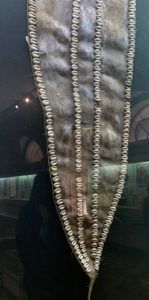
A known kitchen garment is an apron, and while it may appear to be a ‘modern’ item, it is actually a traditional attire in the Tharaka community.
The apron was made of leather and decorated with cowrie shells. As for the demographic who wore them, it was designed for married women and the Tharaka people saw it as a symbol of fertility.
Traditional Footwear
Akala
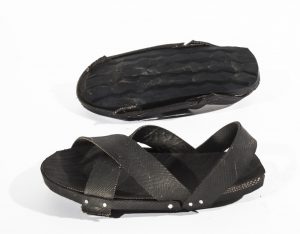 Known as akala in Western Kenya, dunlop in Taita Taveta, nyinyira in Central Kenya and to a few others, these are Akamba Bata. They are made from rubber from old, unused tyres. Pastoralists have adopted this footwear, which is said to last longer than the hide and leather ones they used to wear.
Known as akala in Western Kenya, dunlop in Taita Taveta, nyinyira in Central Kenya and to a few others, these are Akamba Bata. They are made from rubber from old, unused tyres. Pastoralists have adopted this footwear, which is said to last longer than the hide and leather ones they used to wear.
Kwegh
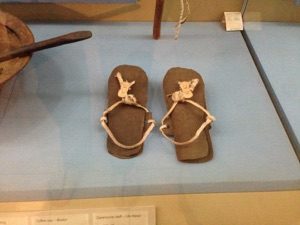
Made from tough buffalo hide (for the sole) and leather for the straps. The kwegh is strapped to the foot. This was the most efficient shoe for pastoralists due to their long-distance trekking – they are said to walk at a sprint so this sandal keeps the body in balance.
Mitawanda
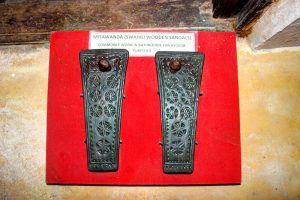
Swahili footwear used indoors and made of wood. There are two raised heels and a knob that goes between the big and index toes.

